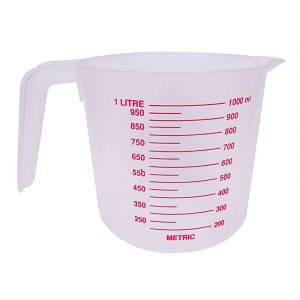Cups and Capacity
 (1) You will need a collection of cups, either disposable cups like the ones shown or any mugs and cups you have available. You will also need some water and a measuring jug.
(1) You will need a collection of cups, either disposable cups like the ones shown or any mugs and cups you have available. You will also need some water and a measuring jug.
Which cup would you fill with water if you are really thirsty and want a lot to drink?
Arrange your cups in order of size from the one that holds the smallest amount of liquid (the smallest capacity) to the one that holds the most.
Number your cups 1 to 8, number 1 for the smallest capacity and 8 for the biggest.
How many cupsful from cup 1 would it take to fill cup 8? How would you test this without using a measuring jug? Now check this answer. Was your estimate about right? If not can you explain how you made your estimate and why it was w rong? See if you can make a better estimate of how many cupsful from cup 4 fill cup 8.
rong? See if you can make a better estimate of how many cupsful from cup 4 fill cup 8.
(2) Now use your measuring jug to find out the capacity of cup 1 and cup 8 in millilitres. Use this information to help you to estimate the capacities of cups 2, 3, 4, 5, 6 and 7 in millilitres. Write down your estimates. Now check by filling these cups with water and then pouring the water into the measuring jug and reading the number of millilitres from the scale.
Click here to download the CUPS AND CAPACITY Inclusion and Home learning Guide.
Click here to download the CUPS AND CAPACITY worksheet.
Click here for the Notes for Teachers.
This problem is adapted from the NRICH task Compare the Cups with permission of the University of Cambridge. All rights reserved.
South Africa COVID-19 News
Here is the official website for COVID-19 updates.
Login
SUPPORT AIMSSEC





